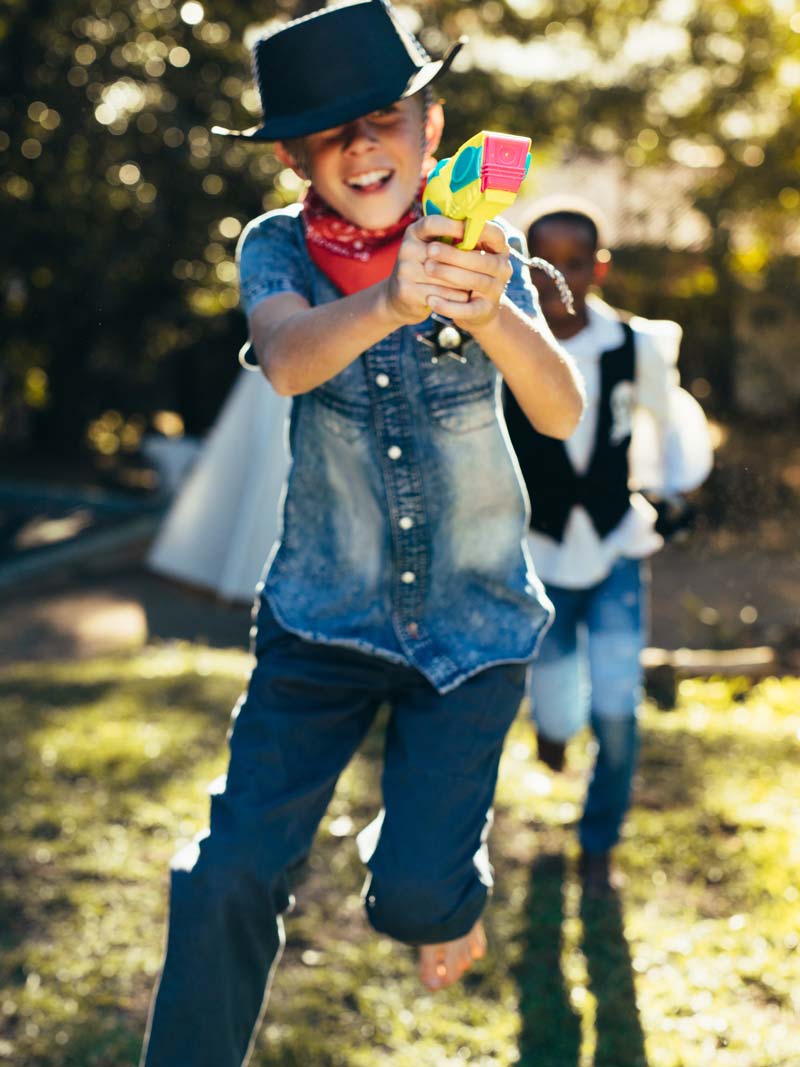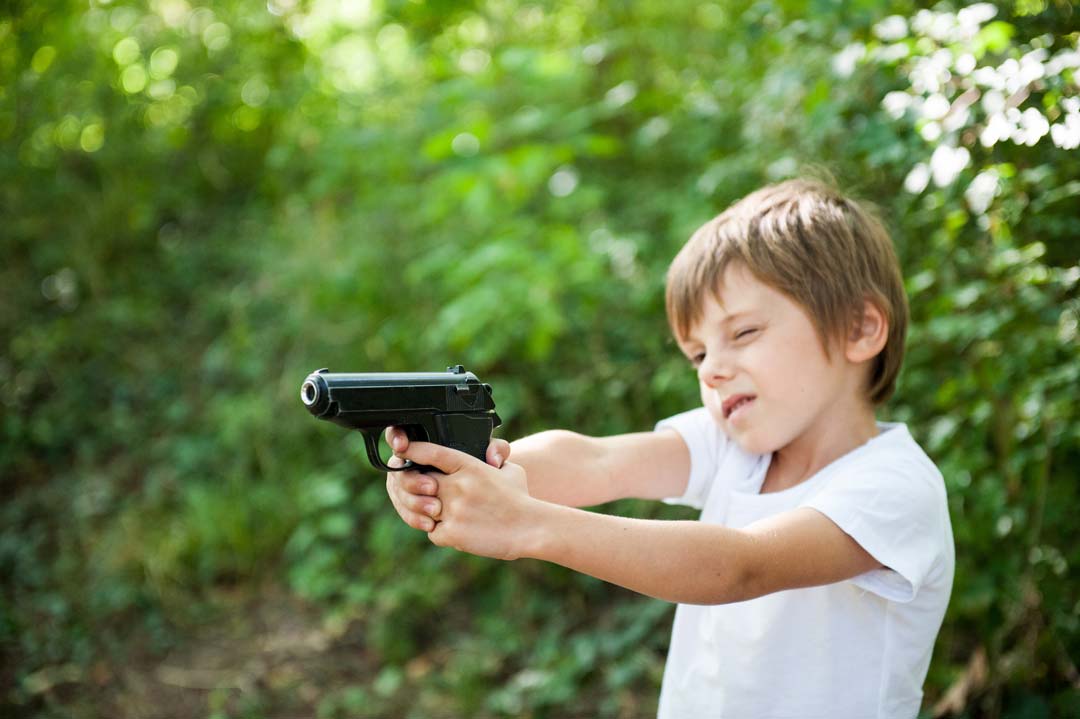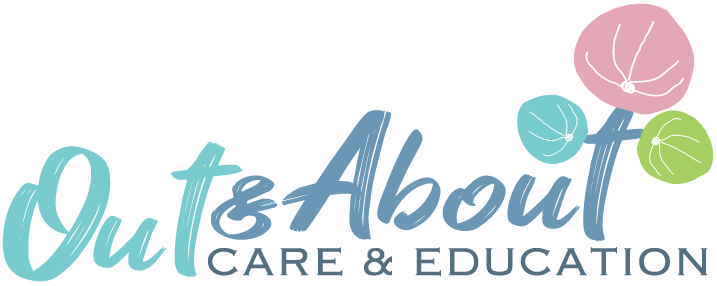IS PLAYING WITH GUNS A GOOD IDEA?
Children see and hear about guns on a regular basis, and it is impossible to prevent them seeing weapons in some form. It is on TV, in games, videos, on the internet, in cartoons and in toy figures and everywhere children look these days. The questions for families and educators are—what do we think about gun play and how do we manage this best?

Gunplay tends to be an emotive issue that polarises people, on one side or the other, for or against. The reality is that children need to know weapons of some kind exist for good reasons and are used safely and responsibly by those who use them in their work lives, such as the police or soldiers who may keep us safe if needed, farmers who use them as a management tool on properties and so on. There are legitimate reasons for guns to exist in our world. It is the negative side of guns that frightens us as parents and fear often cause us to make blanket rulings against that which we fear. Is this wise? What could be the result of this? Is there a better way to manage this debate that allows us to teach children to consider their world more realistically? A tricky question indeed for all of us to consider.
We know that when children are banned from any activity, it often becomes the most sought-after thing in their world and must be done (in secret, sneaky ways, and hopefully without Mum and Dad finding out). We all remember being just like that as children, I am sure.
We also know that we as parents’ sanction and participate in gunplay in other ways without a second thought. It’s just fun and play, isn’t it? Water and paint guns are not even worried about, but do young children really understand the difference? Young children can become confused by this apparent double standard. This gun is ok, but that gun is not. Each family makes their own decision about gunplay of all kinds—what is ok and what is not.
To consider the gunplay or no gunplay question, we also need to understand why children need to play. Children need to:
- Assimilate what they’ve seen or experienced and acting it out helps to do this
- Understand what confuses them
- Act out how they can take control sometimes when they have fears, anxieties or worries
- Practice basic skills of all kinds (not killing)
- Try out roles to help them learn perspective, compassion, and other positive traits
- Have fun that is safe and enjoyable as play is usually
- Play in flexible and accessible ways without fear
Children naturally play and find joy in many of their activates during the typical day. They add in things that frighten them, confuse them or cause worry as part of the play to take control of the outcomes and make it acceptable for themselves and understand what it means.
Once children learn about the notion of killing/dying or the absolute end of people, animals etc, they need to assimilate that information in a way they can understand, so they role play it. This is harmless and is the natural way young children learn about the world and their place in it—on many topics they learn about.
To date, there is no evidence that playing innocently with guns during “good and bad guy” games causes any more violence in children in the future. There is no cause and effect documented anywhere as far as I have been able to find.
So, where does gunplay fit and how do we prevent it from taking a negative turn? If we ban gunplay altogether, we take away children’s ability to act out how to manage themselves under pressure or in tricky situations. It also creates a losing battle for parents and educators to monitor.

We prefer children do not have toy guns as they look too realistic these days. We do not purchase guns for play, but if a child creates a gun with blocks, their fingers, or other materials, we monitor the play, ensuring it is not angry and aggressive play towards other children. Rather, we will have a conversation about the gun, and why it was felt important enough to do, and what kind of game is proposed with the weapon. If the game is not appropriate, we redirect the game to something more positive, but with a meaningful and sensitive conversation first. We try to understand the child’s motivation in making the gun, as there may be reasons they need to understand the weapon and what it does in an innocent child-like way. We may discuss what causes hurt and pain, and frightens people, and talk about how to prevent that feeling for ourselves and our friends. We acknowledge that some professions use guns and other weapons to help take care of us and keep us safe, but most people do not use guns. We might even discuss how guns can be accidentally set off causing harm to others, and other related issues, to put some perspective around the gun issue. This can be the beginning of understanding and being a good citizen and community member.
By being open to these conversations, we are enabling children to consider their views, understand what weapons are, and how they may be safely used, or not, depending on whether you are being a soldier or policeman and so on. Even, then, we will discuss how guns are not used as a first resort, that they are not just easy answers to tricky situations (to get what you want or make others do your bidding)—other safer methods are used first, and so on. By approaching this topic as we do all others that children are interested in, we provide the opportunity for deeper understanding to occur, and less sneaky play develops where accidents and upsets are more likely to occur.
We have found that setting clear parameters in a calm manner and focussing on what children CAN do, is the most effective way to keep play safe for all. Responsible adult supervision is always required around active play to ensure this occurs. We always make the distinction that this kind of play is acceptable, but at home, you may be able to do other things if Mum and Dad say it is ok.
In our role, we must set reasonable expectations for children’s ages, provide a safe space for them to explore their ideas, and offer support for children to understand the tricky things about the world they are coming to know about. Managing guns and other types of play are just part of that process.
CONTACT ONE OF OUR CENTRES
Out & About Care and Education
2 Newspaper Place
Maroochydore Q 4558
Google Map Link
newspaperpl@outandabout.net.au
07 5413 8099
CONTACT NEWSPAPER PL
Out & About Care and Education
30 Dalton Drive
Maroochydore Q 4558
daltondr@outandabout.net.au
07 5479 1411
CONTACT DALTON DR
Out & About Care and Education
6 Mooloolah Rd
Mooloolah Valley Q 4553
mooloolah@outandabout.net.au
07 5356 9323

